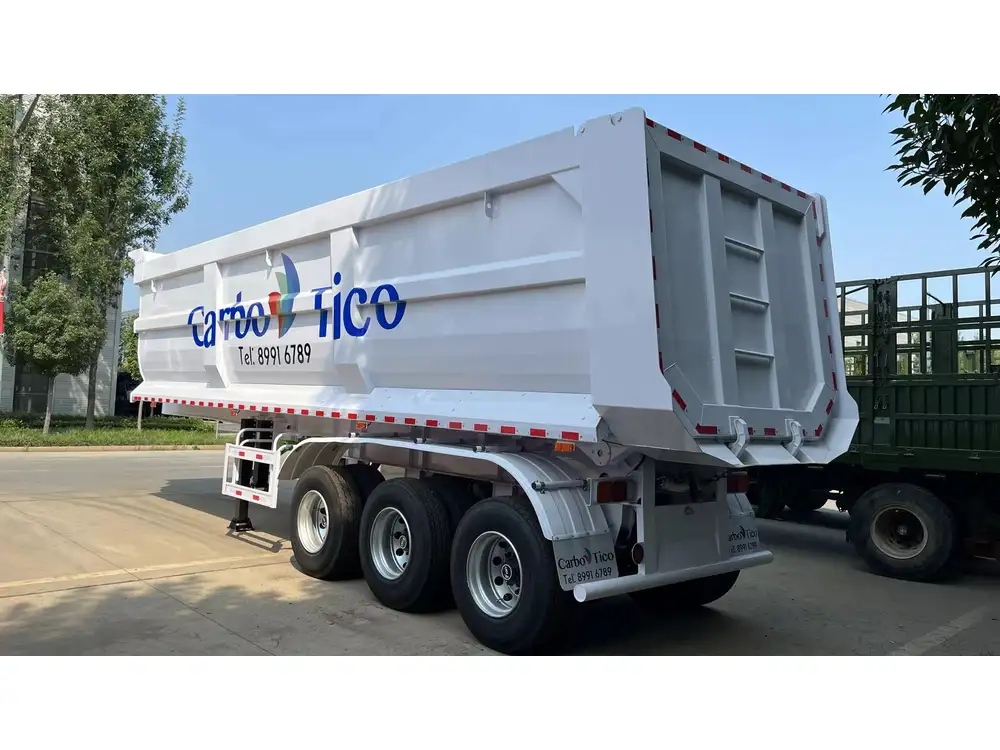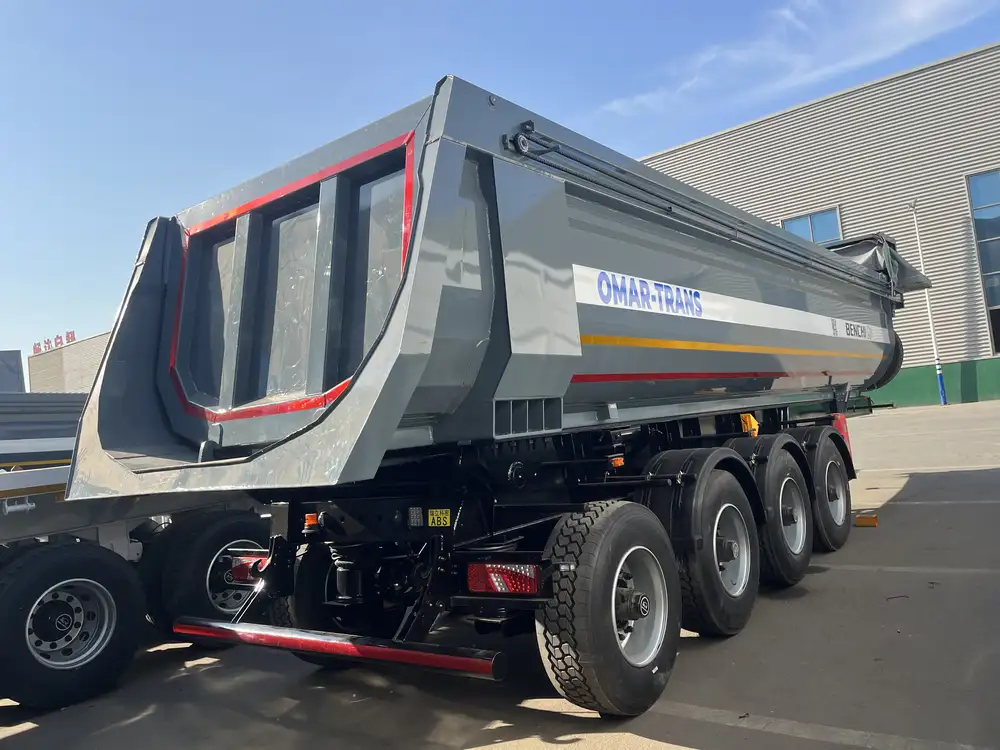When it comes to transporting your mini excavator efficiently, the size of your dump trailer makes all the difference. Whether you’re a contractor, landscaper, or DIY enthusiast, selecting the correct trailer size ensures safe transport, optimal weight distribution, and maximum payload capacity. In this guide, we will dissect the essential factors to consider when pairing a dump trailer with a mini excavator, delve into sizing specifics, and ultimately equip you to make an informed decision.
Understanding Key Metrics: Trailer Size, Payload, and Capacity
Navigating the specifications of dump trailers and mini excavators requires comprehension of several key metrics. Here are crucial factors for effective evaluation:
| Metric | Description |
|---|---|
| Trailer Length | Overall length of the trailer, affecting maneuverability. |
| Trailer Width | Width of the trailer bed, which influences load stability. |
| Payload Capacity | Maximum weight that can be safely loaded on the trailer. |
| Towing Capacity | Weight that the towing vehicle can safely haul. |
| Axle Count | The number of axles, influencing weight distribution and stability. |
Payload Capacity: An Essential Factor
When choosing a dump trailer for your mini excavator, payload capacity is paramount. Mini excavators vary widely in weight but generally fall within the range of 1,500 to 10,000 pounds. Assessing the total weight of your mini excavator alongside any additional tools or materials you intend to transport will guide you in selecting a trailer that can accommodate the complete load.

Determining the Size of the Dump Trailer
Evaluating Mini Excavator Weight
First, determine the weight of your mini excavator. For example, a typical 3,000-pound mini excavator, combined with attachments and necessary tools, might total around 4,000 – 5,000 pounds.Calculating Total Load Weight
It’s essential to consider not just the machine itself but also any additional cargo. A general rule of thumb is that your trailer should have a payload capacity exceeding your total load weight by at least 20%.Choosing Trailer Size Accordingly
Based on our earlier example, a dump trailer with a payload capacity of 7,000 – 8,000 pounds would suffice. Here’s a concise list within this range:
| Dump Trailer Size | Suitable for Mini Excavators up to (lbs) | Example Applications |
|---|---|---|
| 5×8 ft | 3,000 – 4,000 lbs | Small landscaping jobs |
| 6×10 ft | 5,000 – 6,000 lbs | Residential construction |
| 7×14 ft | 7,000 – 8,000 lbs | Medium-grade excavation |
| 8×15 ft | 10,000 lbs | Larger construction projects |
Axle Count: Stability and Weight Distribution
The axle count of a dump trailer affects its stability, handling, and weight distribution. For mini excavators, the most commonly used axles range from single-axle to tandem-axle trailers:
- Single-Axle: Ideal for lightweight mini excavators (up to 4,000 pounds) and smaller loads. Easy to maneuver but may struggle with weight distribution on heavy loads.
- Tandem-Axle: Offers better load stability and higher weight capacity (up to 8,000 pounds or more), making them suitable for heavier mini excavators and larger loads.
Choosing Your Trailer’s Axle Configuration
| Type | Pros | Cons |
|---|---|---|
| Single-Axle | Lightweight, easier to maneuver | Less stable, limited weight capacity |
| Tandem-Axle | Greater stability, higher load capacity | More challenging to navigate, heavier to tow |

Assessment of Towing Vehicle Compatibility
The towing vehicle’s specifications play a crucial role in your decision-making process. Here are key considerations:
Towing Capacity
Verify the Vehicle’s towing capacity to ensure it can handle the weight of the dump trailer combined with your mini excavator.Hitch Class
Ensure that the vehicle has the appropriate hitch, which corresponds to the weight of the trailer.Braking System
A heavy-duty braking system might be needed if towing with a larger trailer, which features electric or hydraulic brakes for safety and control.
Overview of Towing Vehicle Specifications
| Vehicle Type | Typical Towing Capacity | Recommended Trailer Type |
|---|---|---|
| Compact Truck | 5,000 – 7,000 lbs | Single-Axle Dump Trailer |
| Full-size Truck | 8,000 – 12,000 lbs | Tandem-Axle Dump Trailer |
| SUVs | 4,000 – 6,000 lbs | Small Dump Trailers |
Safety Considerations When Choosing a Dump Trailer
Safety should be at the forefront of your decision. Ensure you assess the following:
Weight Distribution
Proper load distribution keeps the trailer stable while towing. Distributing the weight evenly will aid in preventing sway.Tire Capacity and Wear
Regularly inspect tire wear and capacity to ensure they can handle the trailer’s weight.Lighting and Signal Systems
Adequate lighting and signaling systems on the trailer are essential for road safety.Brake Systems
Deciding on a trailer with a proper braking system will lead to safer stops and improved control.

Essential Safety Measures Checklist
| Safety Measure | Description |
|---|---|
| Load Weight Check | Ensure loads don’t exceed capacity |
| Braking System Review | Monthly checks of braking functionality |
| Regular Tire Inspection | Confirm adequate tread depth and inflation levels |
| Lighting System Functionality | Regular operational tests of trailer lights |
Customizing Your Trailer for Enhanced Functionality
When size and capacity aligned with your requirements, consider additional features that can enhance functionality:
- Hydraulic Lift Systems: For efficient loading and unloading of materials.
- High-Side Walls: For transporting bulk materials securely.
- Toolbox Storage: Keep equipment secure and organized during transport.
- Ramps or Lifts: To easily load and unload your mini excavator.
Conclusion
In summary, choosing the right size dump trailer for your mini excavator is crucial for maximizing efficiency, safety, and productivity. Through careful consideration of payload capacity, trailer size, axle configuration, and towing vehicle compatibility, you can ensure an optimal pairing for your hauling needs. Always prioritize your unique operational circumstances, project requirements, and safety concerns when making your selection.
By following these guidelines, you position yourself not just for successful transport but also for smoother operations in your projects. Remember, making an informed choice today significantly impacts the efficiency of your future endeavors.



